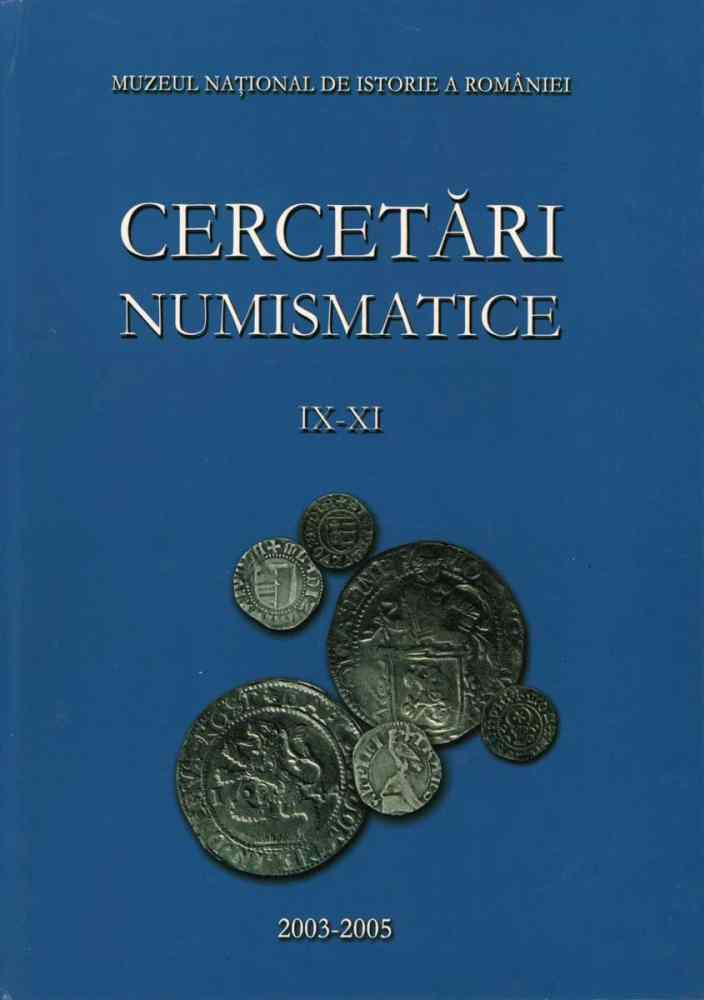
Tezaurul de la Dridu-Snagov, jud. Ialomiţa şi unele aspecte ale circulaţiei monetare în Ţara Românească în secolul al XVII-lea / The Dridu-Snagov Hoard, Ialomiţa County and Some Aspects of the Monetary Circulation in Wallachia during the 17th Century
| Autori |
|
| Secţiunea |
|
| Limba de redactare | română |
| Descriptori |
|
| Excerpt | The Dridu Hoard was discovered during the excavations undertaken at the Dridu-Snagov community reservoir's dam, nearby Dridu village and the Prahova River. The hoard was concealed in a 17 cm high clay jar, covered by a metal lid. Unfortunately, so far remains unknown the initial number of the coins contained by the hoard. The parcel preserved at the collection of the Coin Room of the National History Museum of Romania consist of 28 silver coins of high value - thalers and reales - issued during 1599/1621 - 1621/1665, as following: 1. The Holly Roman Empire - Austria - 2 thalers - Ferdinand lI, 1625, Archduke Leopold 1632; 2. The Holly Roman Empire - Brandenburg I thaler - George Wilhelm 1634; 3. The United Provinces of the Low Countries 14 lion-thalers - Friesland (without year), Utrecht 1625, Westfriesland 1635, 1636, 1637 (2), 1638, Geldern 1637, 1644, 1643 (2), Zwolle 1644, 1648 (2) 4. Spain - 11 coins of 8 reales: Felipe III - before 1616 Potosi (I), 1620 or 1621 Seville (I); Felipe IV - 1622-1661 Mexico (I), 1631-1632 Peru (I), before 1627 Seville (I), 1624-1648 Seville (2); Felipe III or Felipe IV - 1606-1661 Mexico (I), 1599-1621 or 1624-1648 Seville (I), 1600-1665 Spain or colonials (2). The 28 coins cover a span of 44/66 years, the small parcel so far preserved from Dridu hoard closes during the sixth decade of the 17th century. The structure of our hoard is quite typical for deposits this period's, when silver coins of larger value were in currency on the domestic monetary market of Wallachia. As it was previously proved, the thalers have entered the Wallachian monetary market during the second pan of the 16th century, through commercial, military and politically channels. The Spanish reales also appeared on the market starting with the eighth decade of the same century. Unlike the previous century, during the 17th century, the large silver issues of the United Provinces of the Low Countries - the lion-thalers, as well as the Spanish reales were prevailing among the high value coins on the monetary market of Wallachia. However, on this market, one could found some few issues struck in the German and Austrian territories of the Holly Roman Empire. Such a situation is witnessed too by the composition of the Dridu-Snagov hoard. The thalers arrived on the Wallachian monetary market following several routes: by the commercial route linking Wallachia to the Balkans and the Mediterranean, from Central Europe, through Transylvania and from the Baltic area, by Poland, Russia and Moldavia. Many thalers were diffused in Wallachia through the military payments, delivered by the Austrians during the wars against the Ottomans. Very soon after their diffusion in Wallachia, the high-value silver coins became the most largely used currency. The climax of their diffusion in this country was reached during the 1630's, during the Matei Basarab’s reign. The thalers, as well as the reales were used in the payments or the taxes and tributes to the Ottoman Empire. In conclusion, the coin hoard found at Dridu-Snagov, even supposed to be not entirely recovered, represents a considerably amount of money. The variety or monetary species comprised in this hoard proves the existence of extended commercial relations of the Country as well as the presence at Dridu village of a flourishing community. |
| Paginaţia | 413-437 |
| Descarcă fişierul | |
| Titlul volumului de apariție |


